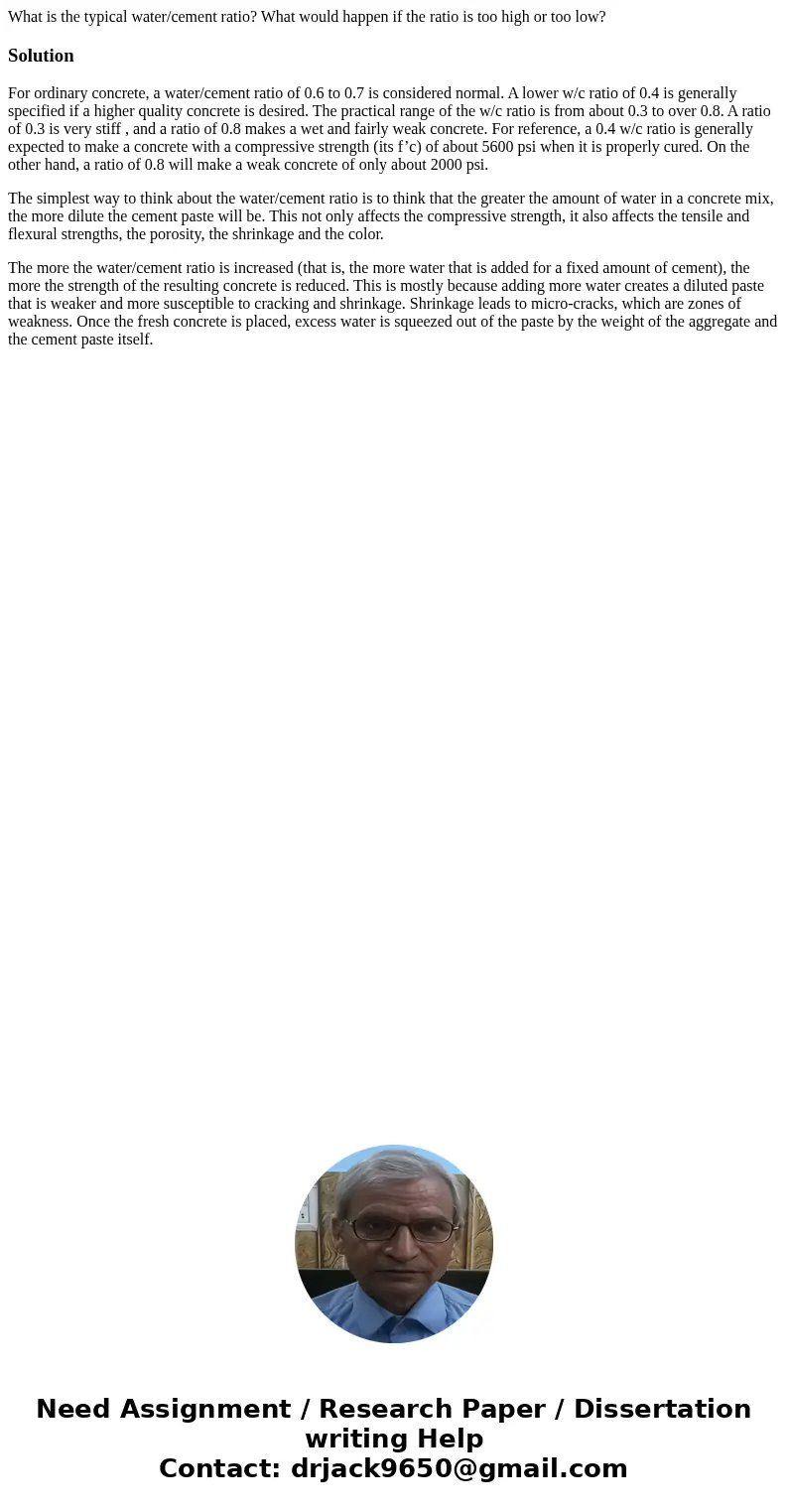What is the typical watercement ratio What would happen if t
What is the typical water/cement ratio? What would happen if the ratio is too high or too low?
Solution
For ordinary concrete, a water/cement ratio of 0.6 to 0.7 is considered normal. A lower w/c ratio of 0.4 is generally specified if a higher quality concrete is desired. The practical range of the w/c ratio is from about 0.3 to over 0.8. A ratio of 0.3 is very stiff , and a ratio of 0.8 makes a wet and fairly weak concrete. For reference, a 0.4 w/c ratio is generally expected to make a concrete with a compressive strength (its f’c) of about 5600 psi when it is properly cured. On the other hand, a ratio of 0.8 will make a weak concrete of only about 2000 psi.
The simplest way to think about the water/cement ratio is to think that the greater the amount of water in a concrete mix, the more dilute the cement paste will be. This not only affects the compressive strength, it also affects the tensile and flexural strengths, the porosity, the shrinkage and the color.
The more the water/cement ratio is increased (that is, the more water that is added for a fixed amount of cement), the more the strength of the resulting concrete is reduced. This is mostly because adding more water creates a diluted paste that is weaker and more susceptible to cracking and shrinkage. Shrinkage leads to micro-cracks, which are zones of weakness. Once the fresh concrete is placed, excess water is squeezed out of the paste by the weight of the aggregate and the cement paste itself.

 Homework Sourse
Homework Sourse